Spy stuff: stay secret
About crypto devices and machines more than once mentioned in previous articles. But how to ensure the secure transfer of keys and codes, without which the work of the secret services and spies would be equal to "0". There is the International Spy Museum, the exhibits of which are thousands of all kinds of spyware and accessories, often they are common everyday items. Earlier, one of the resources published the top 10 most famous and unknown spyware of this museum. Among them (sorry, but not always household items):

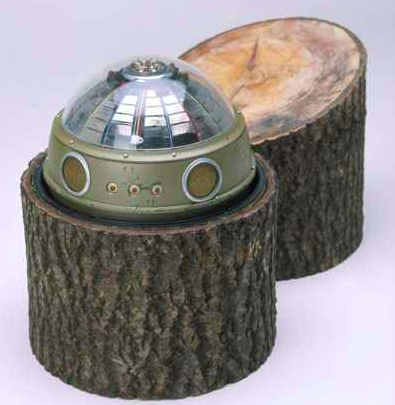
Stump - radio bug

Beetle - lipstick
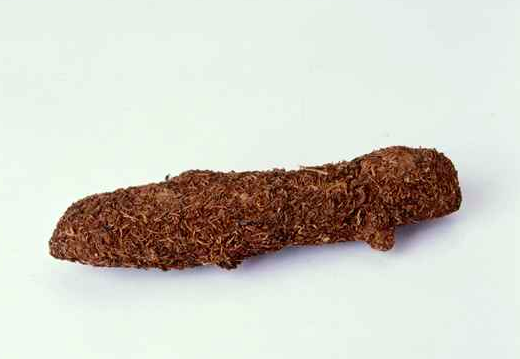
Dog poop - transmitter

Camera coat

Shoes with transmitter
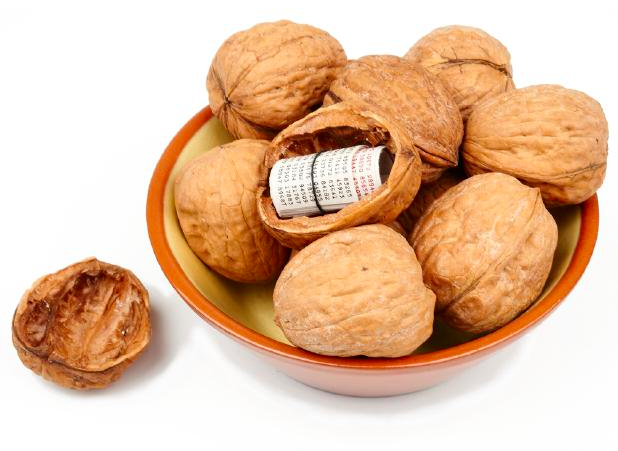
By the example of this nut, such a thing becomes clear - any household item can be turned into a secret device. The nuts were used by the Secret Service of the USSR, the KGB, for many years to transfer the One-Time Pad (OTP) to secret agents who worked under cover in Western Europe. OTP code usually consists of pages that contain sets of random letters or numbers. Each page with OTP code was used only once, after which it was immediately destroyed.
The KGB service printed small books with the OTP code on very thin paper, they were placed inside the walnut. The agent could hide a secret thing in his living room between real walnuts, without attracting attention and not causing suspicion.
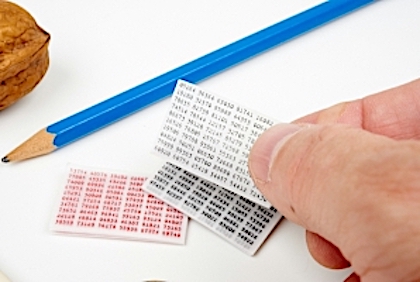
Walnuts were peeled, leaving only the shell. OTP books usually consisted of two types of pages: with black and red text. Black text was used to decode messages, while red text was used to send messages. The thinnest paper did not take up much space and was easily folded. On the page there were groups of 5 characters, 10 rows of 6 columns per page, everything was arranged in the form of an accordion. The pages were tied together with each other, and hidden inside the nut. Then the two halves of the walnut were combined with glue. It was very difficult to distinguish such secret nuts from real ones.
These nuts with a surprise inside were found in the home of a KGB agent in the 1980s in West Germany. After his arrest, the German Intelligence Agency and the Criminal Police Office searched the spy’s apartment. Nothing was found, but one of the officers had the idea to check the nuts, which were “quietly” lying in a bowl on the table. Most of them were no different from ordinary ones, but for some reason a couple of nuts stood out from the “crowd” with their smaller sizes. So the OTP pages were found, on each - 60 5-digit groups of characters.
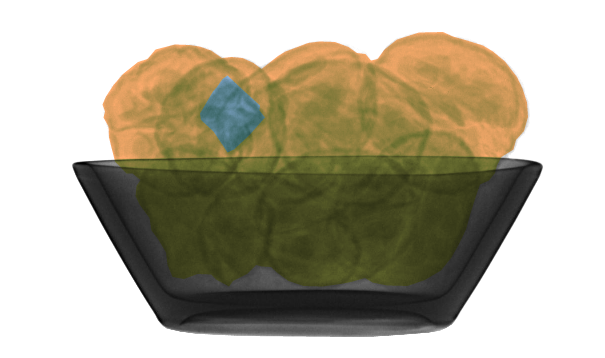
In the picture above, the X-rayed walnut plate: organic objects are orange and green, and the inorganic object is blue. In addition to using X-rays, it was possible to find "surprises" by determining their weight, they were much lighter than their natural counterparts.
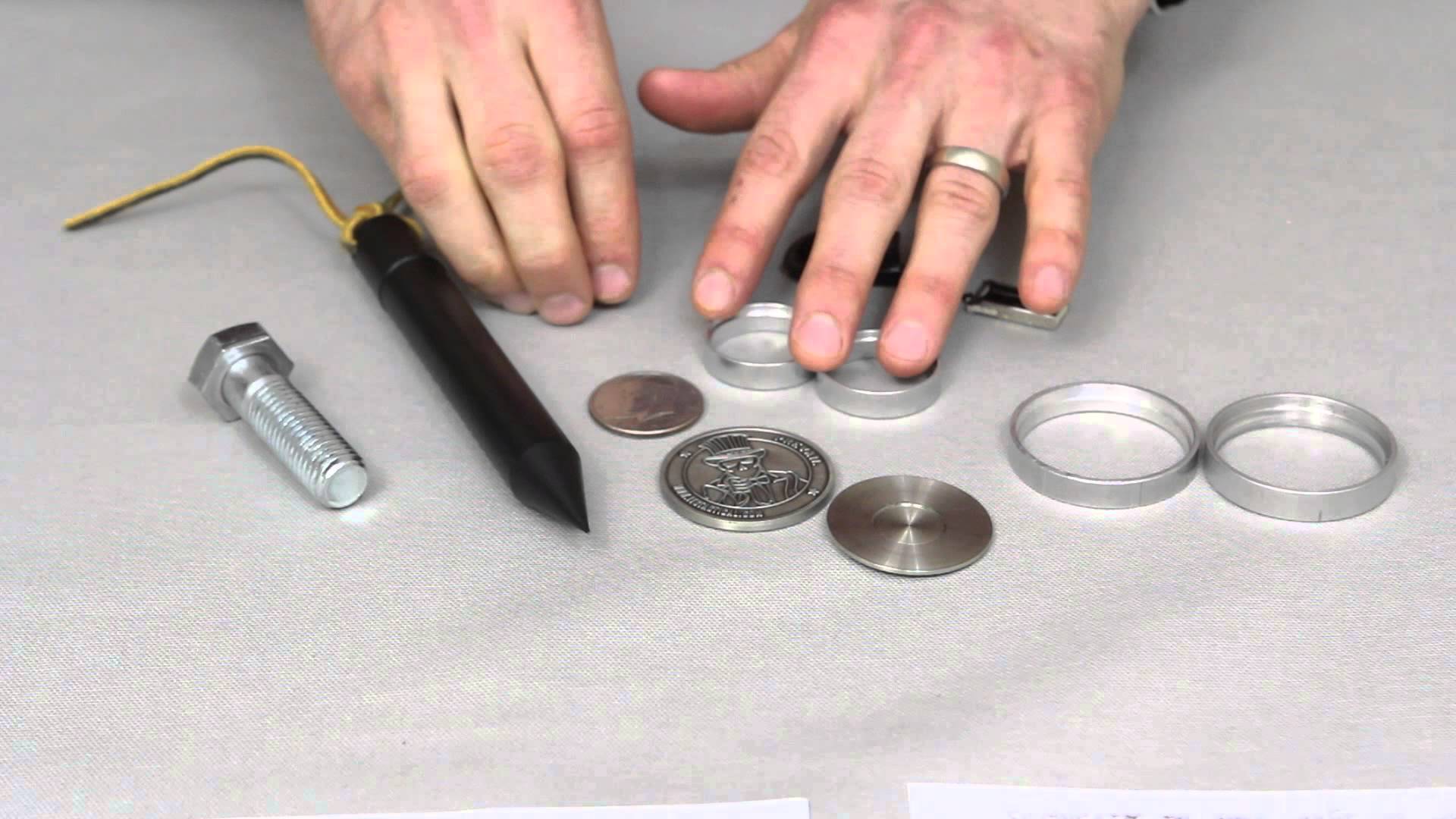
It was already unreasonable to use handbags, cases and suitcases for hiding places, because the double bottom is a very old device that is easily determined at the first inspection. Because there was a mass of objects that at first glance are far from being kept secrets.
This ordinary metal bolt is actually a cache, which has been successfully used in the spy craft. Such objects are usually used by agents to transfer small items, messages. They do not attract much attention, and therefore are safe.
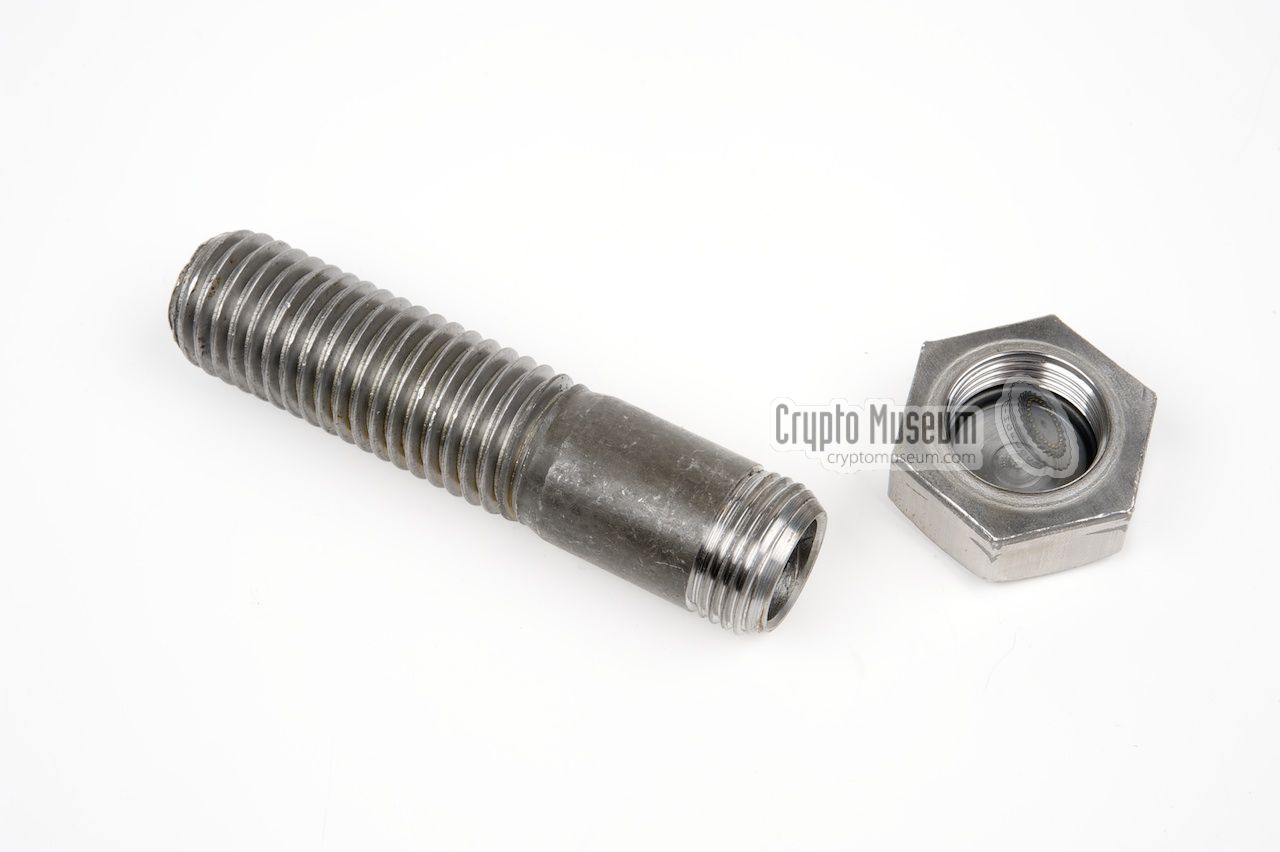
In the closed state, the device looks like a normal, nondescript metal bolt. However, in fact, this bolt has a secret compartment for storing secret messages, or even for hiding small things, such as money, cryptographic keys, tables, secret contact details, instructions, and even a small computer chip. Such a bolt is waterproof. Such devices were very popular during the Cold War, it is likely that they are still used by spies today.

During the Cold War, agents used hollow coins as caches and kept secret codes, messages, microfilm, or poison in them, in case of emergency. CIA agents have successfully used such a device in the form of a silver coin. It differed from the usual in terms of weight, although in practice it was difficult to feel it. It was possible to open it only when pressing a certain point on one of the sides of the coin.
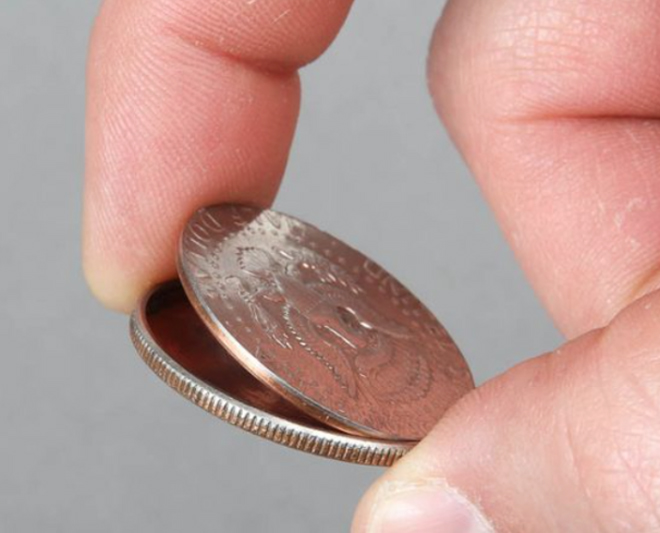
The KGB also developed such a cache in the form of coins from the 1950s. A spy could safely store microfilms or microcards in a hollow coin. Such a cache was opened with a needle, it was necessary to find a small hole on the face of the coin and insert a needle into it.
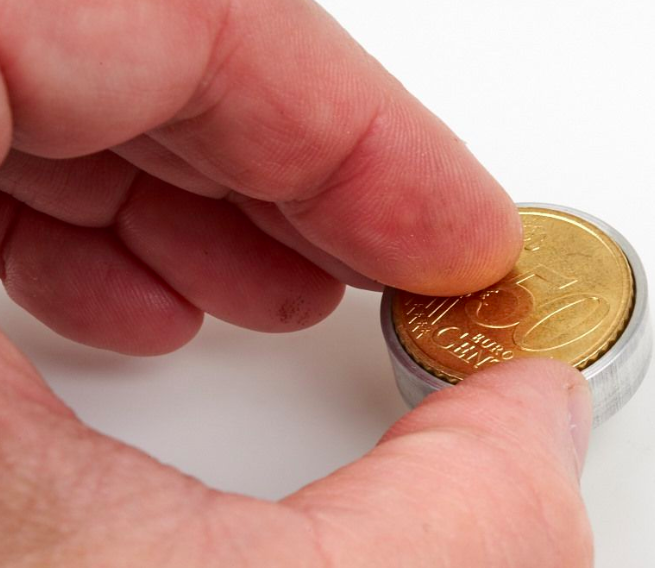
A 50 euro cent coin is identical to any other, except that it can be divided into two parts. It consists of two parts, in the center there is a small compartment for storing "secret" spyware. Such a device will not open inadvertently at the most inopportune moment, in order to gain access to the internal cache, the agent must use a special aluminum ring. The coin is inserted into this ring, and then strongly "tapped" on the table (or other solid object).
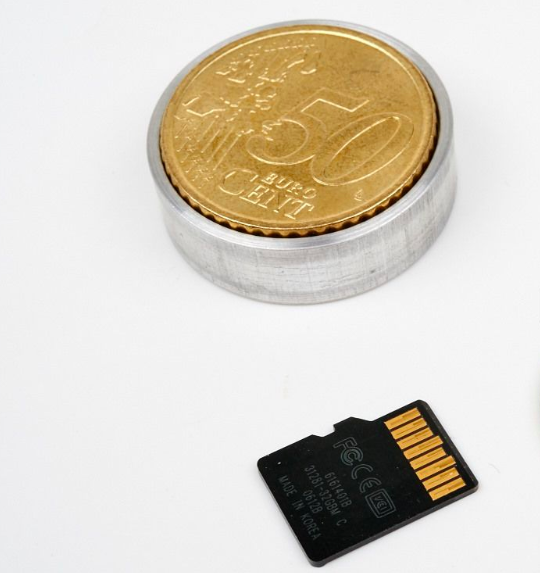
Nowadays, such coins can be easily used to hide computer chips, such as Micro-SD memory cards.
Video instruction from Alexander Polulukha, how to make a cache in an everyday coin of one hryvnia
So to say, this is where the spy could roam. During the Cold War, a travel kit was a popular item among agents. Such sets of travelers were used by the USSR and East Germany, they carried fake passports, OTP codes, secret documents.
In the 1960s, a personal care kit was an indispensable accessory for business people traveling around the world. A large leather wallet, the dimensions of which are 28 x 17 x 5 cm, contained a razor, toothbrush, nail file, shaving mirror, toothbrushes, fabric brush, comb and other things necessary on the road.
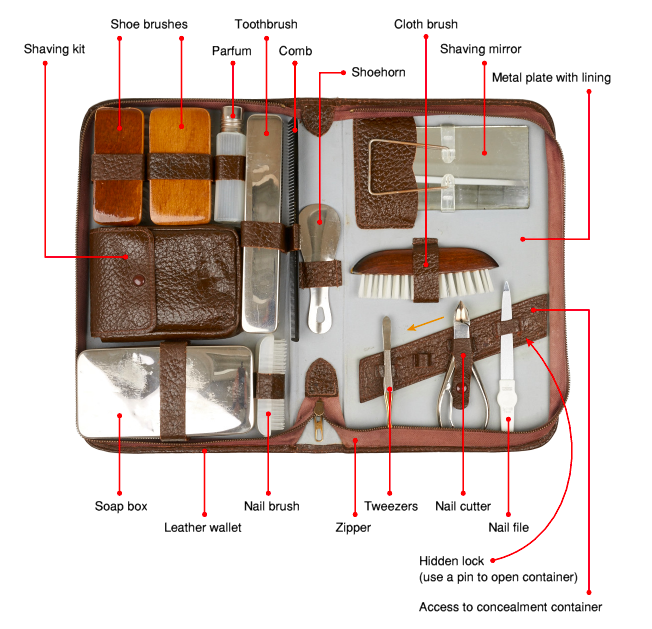
It was a secret compartment, a cache, which is invisible not only for the eyes, but also for X-ray equipment at customs. It could be opened by inserting a sharp needle-type object into a small hole (in a certain place): the lock was opened and secret materials could be obtained. Inside was an orange envelope with a rope. Such an envelope was large enough to hide two passports, money, secret documents and several OTP books in it.
It is believed that espionage is as old as history itself. Often, espionage is called the “second oldest profession in the world.” And therefore the number of such secret things has long exceeded thousands of objects: flashlights, lighters, cigarette packs, invisible hairpins, umbrellas, glasses and many others. What you can’t invent to keep important information secret.
Thank you for staying with us. Do you like our articles? Want to see more interesting materials? Support us by placing an order or recommending to friends, 30% discount for Habr's users on a unique analogue of the entry-level servers that we invented for you: The whole truth about VPS (KVM) E5-2650 v4 (6 Cores) 10GB DDR4 240GB SSD 1Gbps from $ 20 or how to share the server? (Options are available with RAID1 and RAID10, up to 24 cores and up to 40GB DDR4).
3 months for free if you pay for new Dell R630 for a period of half a year - 2 x Intel Deca-Core Xeon E5-2630 v4 / 128GB DDR4 / 4x1TB HDD or 2x240GB SSD / 1Gbps 10 TB - from $ 99.33 a month , only until the end of August, order can be here .
Dell R730xd 2 times cheaper?Only we have 2 x Intel Dodeca-Core Xeon E5-2650v4 128GB DDR4 6x480GB SSD 1Gbps 100 TV from $ 249 in the Netherlands and the USA! Read about How to build an infrastructure building. class c using servers Dell R730xd E5-2650 v4 worth 9000 euros for a penny?

- Dog Turd Transmitter
- Stump - radio bug
- Dove - camera
- Bulgarian umbrella
- Shifrdisk
- Enigma Encryption Machine
- Boot with transmitter
- Micro lens camera
- Coat camera
- Pistol - Lipstick

Stump - radio bug

Beetle - lipstick

Dog poop - transmitter

Camera coat

Shoes with transmitter
Secret devices

By the example of this nut, such a thing becomes clear - any household item can be turned into a secret device. The nuts were used by the Secret Service of the USSR, the KGB, for many years to transfer the One-Time Pad (OTP) to secret agents who worked under cover in Western Europe. OTP code usually consists of pages that contain sets of random letters or numbers. Each page with OTP code was used only once, after which it was immediately destroyed.
The KGB service printed small books with the OTP code on very thin paper, they were placed inside the walnut. The agent could hide a secret thing in his living room between real walnuts, without attracting attention and not causing suspicion.

Walnuts were peeled, leaving only the shell. OTP books usually consisted of two types of pages: with black and red text. Black text was used to decode messages, while red text was used to send messages. The thinnest paper did not take up much space and was easily folded. On the page there were groups of 5 characters, 10 rows of 6 columns per page, everything was arranged in the form of an accordion. The pages were tied together with each other, and hidden inside the nut. Then the two halves of the walnut were combined with glue. It was very difficult to distinguish such secret nuts from real ones.
These nuts with a surprise inside were found in the home of a KGB agent in the 1980s in West Germany. After his arrest, the German Intelligence Agency and the Criminal Police Office searched the spy’s apartment. Nothing was found, but one of the officers had the idea to check the nuts, which were “quietly” lying in a bowl on the table. Most of them were no different from ordinary ones, but for some reason a couple of nuts stood out from the “crowd” with their smaller sizes. So the OTP pages were found, on each - 60 5-digit groups of characters.

In the picture above, the X-rayed walnut plate: organic objects are orange and green, and the inorganic object is blue. In addition to using X-rays, it was possible to find "surprises" by determining their weight, they were much lighter than their natural counterparts.
How to equip a reliable cache with minimal cost?

It was already unreasonable to use handbags, cases and suitcases for hiding places, because the double bottom is a very old device that is easily determined at the first inspection. Because there was a mass of objects that at first glance are far from being kept secrets.
Fake bolt
This ordinary metal bolt is actually a cache, which has been successfully used in the spy craft. Such objects are usually used by agents to transfer small items, messages. They do not attract much attention, and therefore are safe.

In the closed state, the device looks like a normal, nondescript metal bolt. However, in fact, this bolt has a secret compartment for storing secret messages, or even for hiding small things, such as money, cryptographic keys, tables, secret contact details, instructions, and even a small computer chip. Such a bolt is waterproof. Such devices were very popular during the Cold War, it is likely that they are still used by spies today.

Coins
Using small items that you usually carry with you for a cache can be a sensible idea, but maybe not..
During the Cold War, agents used hollow coins as caches and kept secret codes, messages, microfilm, or poison in them, in case of emergency. CIA agents have successfully used such a device in the form of a silver coin. It differed from the usual in terms of weight, although in practice it was difficult to feel it. It was possible to open it only when pressing a certain point on one of the sides of the coin.

The KGB also developed such a cache in the form of coins from the 1950s. A spy could safely store microfilms or microcards in a hollow coin. Such a cache was opened with a needle, it was necessary to find a small hole on the face of the coin and insert a needle into it.

A 50 euro cent coin is identical to any other, except that it can be divided into two parts. It consists of two parts, in the center there is a small compartment for storing "secret" spyware. Such a device will not open inadvertently at the most inopportune moment, in order to gain access to the internal cache, the agent must use a special aluminum ring. The coin is inserted into this ring, and then strongly "tapped" on the table (or other solid object).

Nowadays, such coins can be easily used to hide computer chips, such as Micro-SD memory cards.
Video instruction from Alexander Polulukha, how to make a cache in an everyday coin of one hryvnia
Travel kit or spy cosmetic bag
So to say, this is where the spy could roam. During the Cold War, a travel kit was a popular item among agents. Such sets of travelers were used by the USSR and East Germany, they carried fake passports, OTP codes, secret documents.
In the 1960s, a personal care kit was an indispensable accessory for business people traveling around the world. A large leather wallet, the dimensions of which are 28 x 17 x 5 cm, contained a razor, toothbrush, nail file, shaving mirror, toothbrushes, fabric brush, comb and other things necessary on the road.

It was a secret compartment, a cache, which is invisible not only for the eyes, but also for X-ray equipment at customs. It could be opened by inserting a sharp needle-type object into a small hole (in a certain place): the lock was opened and secret materials could be obtained. Inside was an orange envelope with a rope. Such an envelope was large enough to hide two passports, money, secret documents and several OTP books in it.
It is believed that espionage is as old as history itself. Often, espionage is called the “second oldest profession in the world.” And therefore the number of such secret things has long exceeded thousands of objects: flashlights, lighters, cigarette packs, invisible hairpins, umbrellas, glasses and many others. What you can’t invent to keep important information secret.
Thank you for staying with us. Do you like our articles? Want to see more interesting materials? Support us by placing an order or recommending to friends, 30% discount for Habr's users on a unique analogue of the entry-level servers that we invented for you: The whole truth about VPS (KVM) E5-2650 v4 (6 Cores) 10GB DDR4 240GB SSD 1Gbps from $ 20 or how to share the server? (Options are available with RAID1 and RAID10, up to 24 cores and up to 40GB DDR4).
3 months for free if you pay for new Dell R630 for a period of half a year - 2 x Intel Deca-Core Xeon E5-2630 v4 / 128GB DDR4 / 4x1TB HDD or 2x240GB SSD / 1Gbps 10 TB - from $ 99.33 a month , only until the end of August, order can be here .
Dell R730xd 2 times cheaper?Only we have 2 x Intel Dodeca-Core Xeon E5-2650v4 128GB DDR4 6x480GB SSD 1Gbps 100 TV from $ 249 in the Netherlands and the USA! Read about How to build an infrastructure building. class c using servers Dell R730xd E5-2650 v4 worth 9000 euros for a penny?
